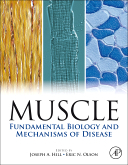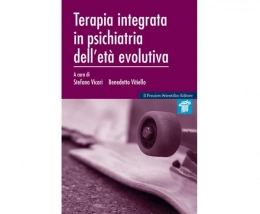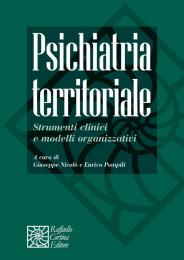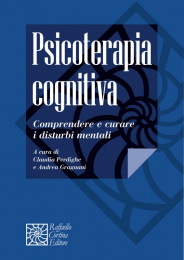Non ci sono recensioni
| Description | |
|
A valuable study of the science behind the medicine, Muscle: Fundamental Biology and Mechanisms of Disease brings together key leaders in muscle biology. These experts provide state-of-the-art insights into the three forms of muscle--cardiac, skeletal, and smooth--from molecular anatomy, basic physiology, disease mechanisms, and targets of therapy. Commonalities and contrasts among these three tissue types are highlighted. This book focuses primarily on the biology of the myocyte.
Individuals active in muscle investigation--as well as those new to the field--will find this work useful, as will students of muscle biology. In the case of hte former, many wish to grasp issues at the margins of their own expertise (e.g. clinical matters at one end; molecular matters at the other), adn this book is designed to assist them. Students, postdoctoral fellows, course directors and other faculty will find this book of interest. Beyond this, many clinicians in training (e.g. cardiology fellows) will benefit. |
| Author Info | |
| Edited by Joseph Hill, Professor of Internal Medicine and Molecular Biology; James T. Willerson, M.D. Distinguished Chair in Cardiovascular Diseases; Frank M. Ryburn, Jr., Chair in Heart Research, University of Texas Southwestern Medical Center, Dallas, TX, USA and Eric Olson, Professor of Molecular Biology; Robert A. Welch Distinguished Chair; Annie and Willie Nelson Professor; Pogue Distinguished Chair in Research on Cardiac Birth Defects, University of Texas Southwestern Medical Center, Dallas, TX, USA |
Table of Contents:
Part 1: Introduction
1. An Introduction to Muscle
2. A History of Muscle
Part II: Cardiac Muscle
Section A: Basic Physiology
3. Cardiac Myocyte Specification and Differentiation
4. Transcriptional Control of Cardiogenesis
5. Cardiomyocyte Ultrastructure
6. Overview of CArdiac Muscle Physiology
7. Ionic Fluxes and Genesis of the Cardiac Action Potential
8. G-Protein-Coupled Receptors in the Heart
9. Receptor Tyrosine Kinases in Cardiac Muscle
10. Communication in the Heart: Cardiokines as Mediators of a Molecular Social Network
11. Calcium Fluxes and Homeostasis
12. Excitation-Contraction Coupling in the Heart
13. Role of Sarcomeres in Cellular Tension, Shortening, and Signaling in Cardiac Muscle
14. Cardiovascular Mechanotransduction
15. Cardiomyocyte Metabolism: All Is in Flux
16. Transcriptional Control of Striated Muscle Mitochondrial Biogenesis and Function
17. Mitochondrial Morphology and Function
18. Genetics and Genomics in Cardiovascular Gene Discovery
19. Cardiovascular Proteomics: Assessment of Protein Post-Translational Modifications
Section B: Adaptations and Response
20. Adaption and Responses: Myocardial Innervations adn Neural Control
21. Regulation of Cardiac Systolic Function and Contractility
22. Intracellular Signaling Pathways in Cardiac Remodeling
23. Oxidative Stress and Cardiac Muscle
24. Physiologic and Molecular Responses of the Heart to Chronic Exercise
25. Epigenetics in Cardiovascular Biology
26. Cardiac MicroRNAs
27. Protein Quality Control in Cardiomyocytes
28. Cardioprotection
29. Cardiac Fibrosis: Cellular and Molecular Determinants
30. Autophagy in Cardiac Physiology and Disease
31. Programmed Cardiomyocyte Death in Heart Disease
32. Wnt and Notch: Potent Regulators of Cardiomyocyte Specification, Proliferation, and Differentiation
Section C: Myocardial Disease
33. Congenital Cardiomyopathies
34. Genetics of Congenital Heart Disease
35. Mechanisms of Stress-Induced Cardiac Hypertrophy
36. Ischemic Heart Disease
37. The Pathophysiology of Heart Failure
38. The Right Ventricle: Reemergence of the Forgotten Ventricle
39. Mammalian Myocardial Regeneration
40. The Structural Basis of Arrhythmia
41. Molecular and Cellular Mechanisms of Cardiac Arrhythmias
42. Genetic Mechanisms of Arrhythmia
43. Infiltrative adn Protein Misfolding Myocardial Diseases
44. Cardiac Aging: From Humans to Molecules
45. Adrenergic Receptor Polymorphisms in Heart Failure
46. Cardiac Gene Therapy
47. Protein Kinases in the Heart: Lessons Learned from Targeted Cancer Therapeutics
48. Cell Therapy for Cardiac Disease
49. Chemical Genetics of Cardiac Regeneration
50. Device Therapy for Systolic Ventricular Failure
51. Novel Therapeutic Targets and Strategies against Myocardial Diseases
Part III: Skeletal Muscle
Section A: Basic Physiology
52. Skeletal Muscle Development
53. Skeletal Muscle: Architecture of Membrane Systems
54. The Vertebrate Neuromuscular Junction
55. Neuromuscular Interactions that Control Muscle Function and Adaptation
56. Control of Resting CA2+ Concentration in Skeletal Muscle
57. Skeletal Muscle Excitation-Contraction Coupling
58. The Contractile Machinery of Skeletal Muscle
59. Skeletal Muscle Metabolism
60. Skeletal Muscle Fiber Types
Section B: Adaptations and Response
61. Regulation of Skeletal Muscle Development and Function by microRNAs
62. Musculoskeletal Tissue Injury and Repair: Role of Stem Cells, Their Differentiation, and Paracrine Effects
63. Immunological Responses to Muscle Injury
64. Skeletal Muscle Adaptation to Exercise
65. Skeletal Muscle Regeneration
66. Skeletal Muscle Dystrophin-Glycoprotein Complex and Muscular Dystrophy
Section C: Skeletal Muscle Disease
67. Statin-Induced Muscle Toxicity: Clinical and Genetic Determinants of Risk
68. Myotonic Dystrophy
69. Facioscapulohumeral Muscular Dystrophy: Unraveling the Mysteries of a Complex Epigenetic Disease
70. ECM-Related Myopathies and Muscular Dystrophies
71. Molecular Pathogenesis of Skeletal Muscle Abnormalities in Marfan Syndrome
72. Diseases of the Nucleoskeleton
73. Channelopathies of Skeletal Muscle Excitability
74. Thick and Thin Filament Proteins: Acquired adn Hereditary Sarcomeric Protein Diseases
75. Metabolic and Mitochondrial Myopathies
Section D: Therapeutics
76. Gene Therapy of Skeletal Muscle Disorders Using Viral Vectors
77. Cell-Based Therapies in Skeletal Muscle Disease
78. Immunological Components of Genetically Inherited Muscular Dystrophies: Duchenne Muscular Dystrophy and Limb-Girdle Muscular Dystrophy
79. Myostatin: Regulation, Function, and Therapeutic Applications
80. Insulin-Like Growth Factor I Regulation and Its Action in Skeletal Muscle Growth and Repair
81. Novel Targets and Approaches to Treating Skeletal Muscle Disease
Part IV: Smooth Muscle
Section A: Basic Physiology
82. Development of the Smooth Muscle Cell Lineage
83. Smooth Muscle Myocyte Ultrastructure
84. Potassium, Sodium, and Chloride Channels in Smooth Muscle Cells
85. G-Protein-Coupled Receptors in Smooth Muscle
86. Calcium Homeostasis and Signaling in Smooth Muscle
87. Regulation of Smooth Muscle Contraction
Section B: Heterogeneities
88. Heterogeneity of Smooth Muscle
89. Microcirculation
90. Uterine Smooth Muscle
Section C: Adaptations and Response
91. Oxidative Stres, Endothelial Dysfunction, and Its Impact on Smooth Muscle Signaling
92. Hemodynamic Control of Vascular Smooth Muscle Function
93. Myogenic Tone and Mechanotransduction
94. Cell-Cell Communication Through Gap Junctions
95. Vascular Smooth Muscle Cell Phenotypic Adaptation
96. Molecular Pathways of Smooth Muscle Disease
Section D: Smooth Muscle Disease
97. Genetic Variants in Smooth Muscle Contraction and Adhesion Genes Cause Thoracic Aortic Aneurysms and Dissections and Other Vascular Diseases
98. Vascular Smooth Muscle Cell Remodeling in Atherosclerosis and Restenosis
99. Arterial Hypertention
100. Diabetic Vascular Disease
101. Vascular Mechanisms of Hypertension in the Pathophysiology of Preeclampsia
102. Erectile Dysfunction
103. Smooth Muscle in the Normal and Diseased Pulmonary Circulation
104. Airway Smooth Muscle and Asthma
105. Aging
106. Vascular Calcification
107. Smooth Muscle Progenitor Cells: A Novel Target for the Treatment of Vascular Disease?
108. Smooth Muscle: Novel Targets and Therapeutic Approaches




